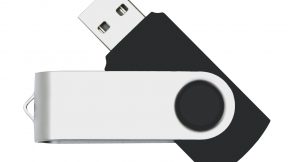Printed Paper- Based Memory Device
Novel method to produce renewable, flexible, foldable, low cost, and disposable memory devices

Due to developments in modern microelectronics, a variety of electronic devices, such as optical discs, hard disk drives, and semiconductor or flash memory devices, are being replaced with new types of memory devices. Due to the development of cost-effective, simpler, and more energy-efficient microelectronic fabrication processes, efforts are ongoing to fabricate electronic devices using printing techniques on various types of substrates, especially flexible substrates. To improve upon current approaches, researchers at KAUST have developed an all-printing method for printed paper-based memory devices. The method utilizes resistive random access memory (RRAM), which is an emerging type of nonvolatile memory ideal for paper-related applications due to its structural simplicity (only one insulator and two electrodes are required per bit).
Technology Summary
With the rapid growth of electronic devices and electronic integration/connectivity in almost every industry, there is a market need for improved and lower-cost electronic components. Specifically there are focused efforts in developing flexible electronics and even paper-based circuits for low-cost and disposable electronic components such as conducting wires, resistors, transistors, diodes, and capacitors. However, the main component lacking in a fully paper-based circuit is the memory device, which is key for programming, data storage, and system settings.
How It Works
Most conventional fabrication techniques are not compatible with paper substrates, but alternative printing techniques such as screen printing, inkjet printing, microcontact printing, and three-dimensional printing are appropriate for paper-based electronics. The researchers have demonstrated the first all-printed electronic paper memory with a simple metal-insulator-conductor structure using a sequence of inkjet and screen printing techniques. Using a regular inkjet printer the researchers obtained a bit density of 104 bit/cm2 (~1 MB for a fully printed sheet of A4 paper). Extensive testing has been performed to demonstrate the performance endurance and robustness of the technology. This technology has numerous manufacturing, cost, and usage benefits over conventional electronics. The fabrication technique could be used to produce printed paper-based memory devices for labels and wearable biocompatible applications, or for fully paper-based electronic circuits for medical biosensors and multifunctional devices.
Why It Is Better
There are a number of advantages of the printed paper-based memory devices. The devices utilize a renewable, flexible, foldable, and disposable paper substrate. The devices can be fabricated at a fraction of the cost of monocrystalline Si wafers. In addition, the devices show excellent device performance even under extreme bending conditions (indicating its mechanical robustness), and can even retain data integrity at high temperatures. When fabricated on an adhesive label, the device can be securely affixed to the surface of almost any material (including electronic devices and living subjects) with high-performance nonvolatile functionality, which facilitates use in flexible, wearable, and biocompatible electronic systems. Finally, unlike conventional devices, permanent removal of secure data from the printed paper-based memory devices can be achieved simply through burning or shredding.
IP Protection
KAUST has a patent pending for this technology.
Invention Track Code
2014-083

Benefits
-
Utilizes a paper substrate, which is renewable, flexible, foldable, low cost, suitable for mass production, disposable, retrievable, nonpolluting, and easy to process
-
Exhibits high reliability in cycling endurance and data retention with a tunable ON/OFF memory window (up to 3 orders of magnitude) based on the thickness of the TiO2 layer
-
Shows excellent device performance even under extreme bending conditions, indicating its mechanical robustness
-
Can be securely affixed to the surface of almost any material

Applications
-
Memory device
-
Circuits
-
Flexible electronics
-
Printed memory
